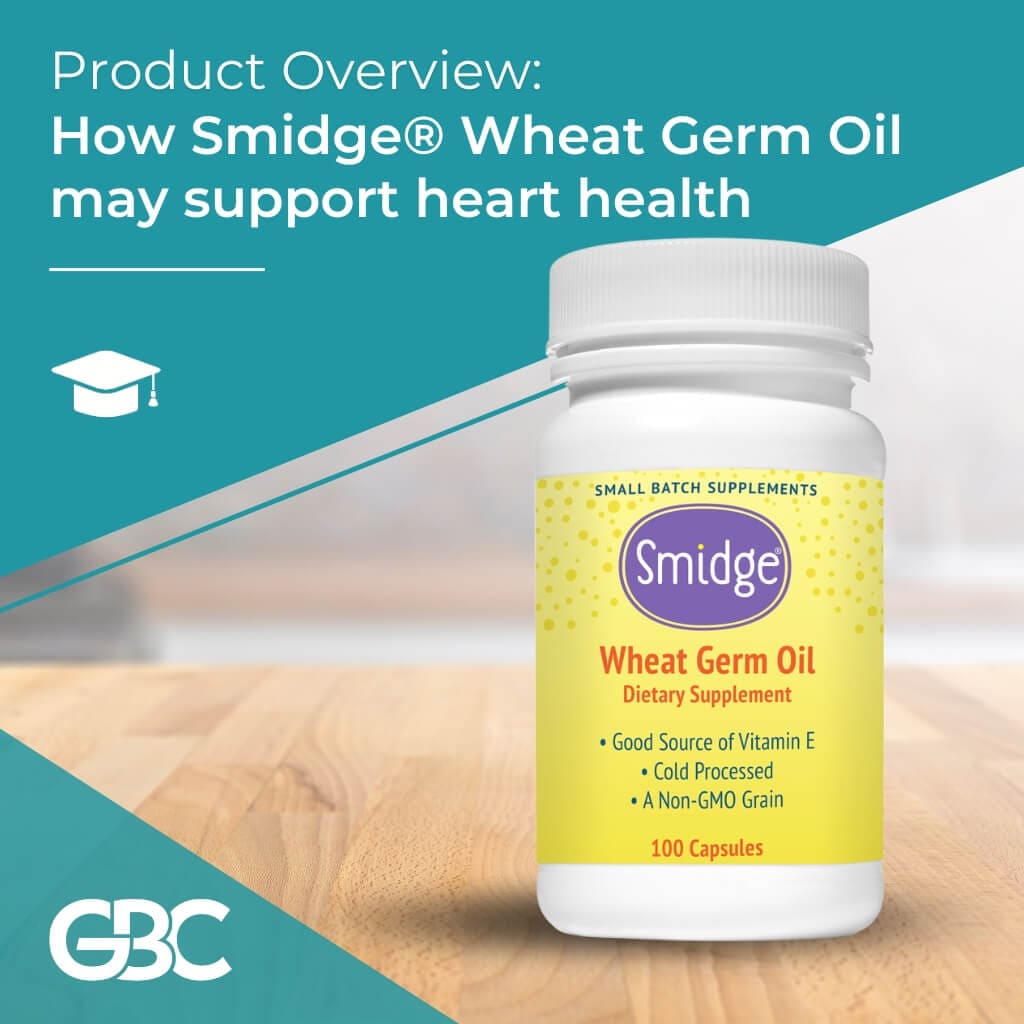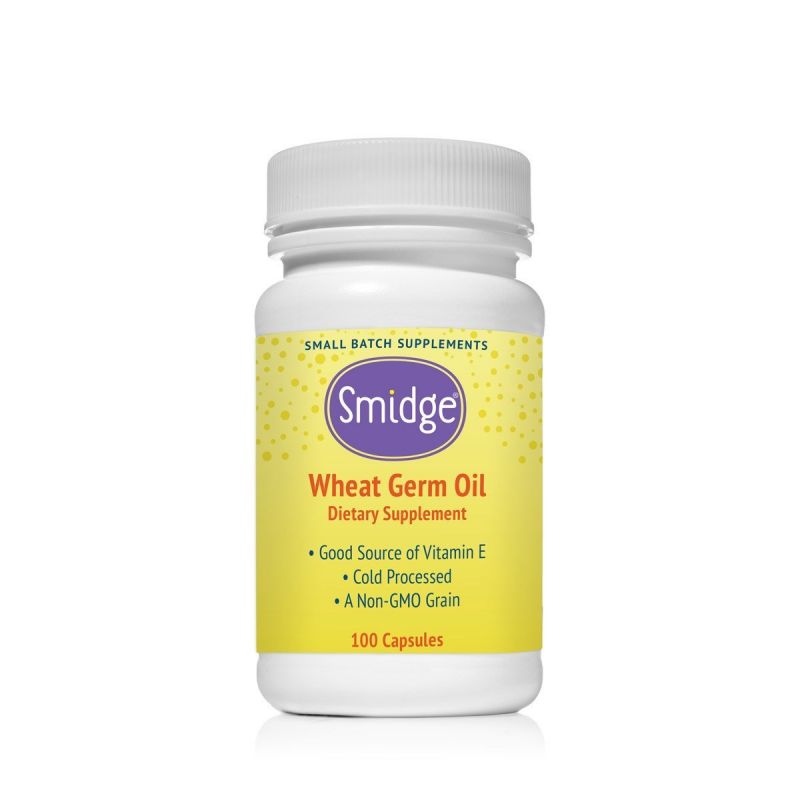The delicate germ of the humble wheat kernel contains a nutrient-dense oil rich in vitamin E, omega-3s and octacosanol. It has been used for centuries in traditional medicine for its numerous health benefits all across the globe. Smidge® uses a gentle, low-heat extraction method from fresh, non-GMO, American wheat to offer you and your customers a high-quality, bioavailable wheat germ oil. In this blog post, we will discuss the traditional use of wheat germ oil and explain what makes wheat germ oil an effective supplementary tool to support dynamic, vibrant health.
Wheat was an essential food source for early civilisation - it was the world's most widely grown and easily cultivated cereal crop. It can be grown in many climates and soils, making it a reliable food source for many cultures. The ancient Egyptians were known for using wheat germ oil as a beauty aid to improve the appearance of skin and hair. They also used it to treat various ailments, including skin conditions and digestive problems. The Greeks and Romans also used wheat germ oil for its medicinal properties, believing it had healing powers. They used it to treat a wide range of health issues, from minor skin irritations to more severe illnesses. In Ayurvedic medicine, an ancient Indian system of medicine, wheat germ oil is used for various health benefits, such as to improve skin, hair and overall health. And lastly, in Chinese traditional medicine, wheat germ oil is also used to improve blood circulation, strengthen the immune system, and improve overall health.
One of the most notable health benefits of wheat germ oil for today's modern society is its ability to promote heart health. The oil is rich in vitamin E, a fat-soluble vitamin that also acts as an antioxidant to help protect the body against damage caused by free radicals, which can contribute to the development of heart disease.
According to Heart Research Institute every nine minutes, one Australian citizen is hospitalised due to a heart attack making heart disease a major national health priority.[1]
Vitamin E may help to lower cholesterol levels by preventing the oxidation of low-density lipoprotein (LDL) cholesterol. When LDL cholesterol is oxidised, it becomes more likely to form dangerous plaques. LDL cholesterol is often referred to as "bad" cholesterol and can build up along with fat and other substances to accumulate on the walls of the blood vessels creating plaques that can clog the arteries. [2] As the plaques build up, they can narrow the blood vessels and restrict blood flow.
Research also shows Vitamin E has anti-inflammatory properties, which can help to reduce inflammation in the blood vessels (a condition known as vascular inflammation). Inflammation can cause the blood vessels to become stiff and lose their elasticity, making it easier for blood clots to form. [3] Both can result in blocked blood flow and cause serious health problems, such as heart attack and stroke.
Vitamin E can also help to improve blood vessel function. Specifically, it has been found to increase the activity of endothelial nitric oxide synthase (eNOS), an enzyme responsible for the production of nitric oxide in the endothelial cells of the blood vessels. [4][5] Nitric oxide is an essential compound that helps to relax and dilate the blood vessels, which is crucial for improving blood flow and lower blood pressure. Nitric oxide also plays an important role in reducing blood platelet aggregation, which is the process by which platelets stick together to form a clot. It does this by activating a protein called Guanylate cyclase in the cells, which sends signalling molecules to tell the platelets to relax and not stick together, therefore helping to prevent the formation of clots. In addition, nitric oxide also promotes the formation of clot-dissolving enzymes such as plasmin, which actively break down clots and prevent them from growing. [6]
Another benefit of wheat germ oil is its ability to boost the immune system. The oil is high in antioxidants, which help to protect the body against infections. Some examples include:
- Topical treatment of skin infections: Wheat germ oil has been traditionally used as a topical treatment for skin infections such as dermatitis and eczema. It is believed that the oil's anti-inflammatory properties may help to reduce inflammation and promote healing. Gently clean the area and pop a capsule on top of the site for a soothing and healing effect. [7]
- Colds and flu: Wheat germ oil has been traditionally used as a natural remedy for colds and flu. It is believed that the oil's high vitamin E content may help to boost the immune system and fight off infections. [8]
- Candida: Wheat germ oil has traditionally been used as a natural remedy for candida, a yeast infection. It is believed that the oil's high vitamin E content may help to inhibit the growth of candida. [9]
In summary, wheat germ oil is a nutrient-dense oil used for centuries in traditional medicine. It has numerous health benefits, including promoting heart health, boosting the immune system, and improving the appearance of skin and hair. The oil is rich in vitamin E, antioxidants, and other essential vitamins and minerals. Wheat germ oil is an excellent addition to a healthy diet and may help to improve overall health and well-being. Try Smidge® Wheat Germ Oil Softgels for a quick and convenient way to add this powerful oil to your daily routine.
References:
[1] Heart attack: causes and warning signs
[2] Vitamin E and atherosclerosis: beyond prevention of LDL oxidation.
[3] Cardiovascular and metabolic protection by vitamin E: A matter of treatment strategy?
[6] Nitric oxide-dependent endothelial function and cardiovascular disease.
[7] Vitamin E in atopic dermatitis: from preclinical to clinical studies.
[8] Regulatory role of vitamin E in the immune system and inflammation.




